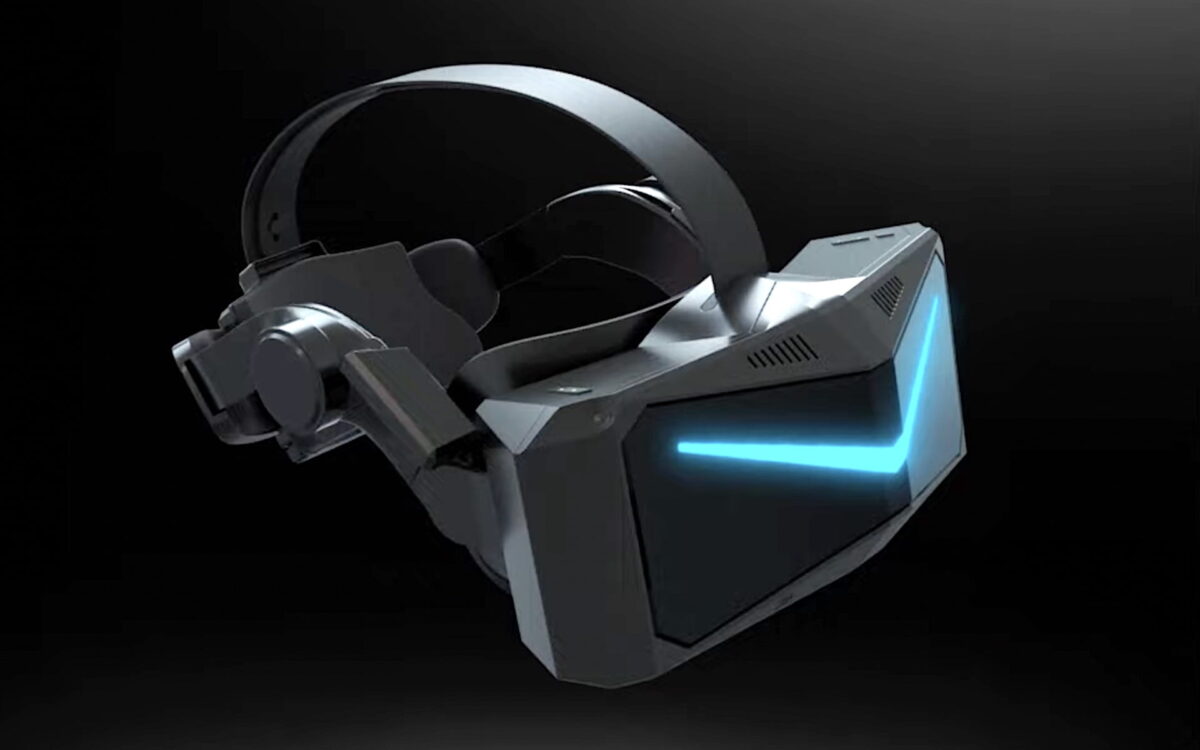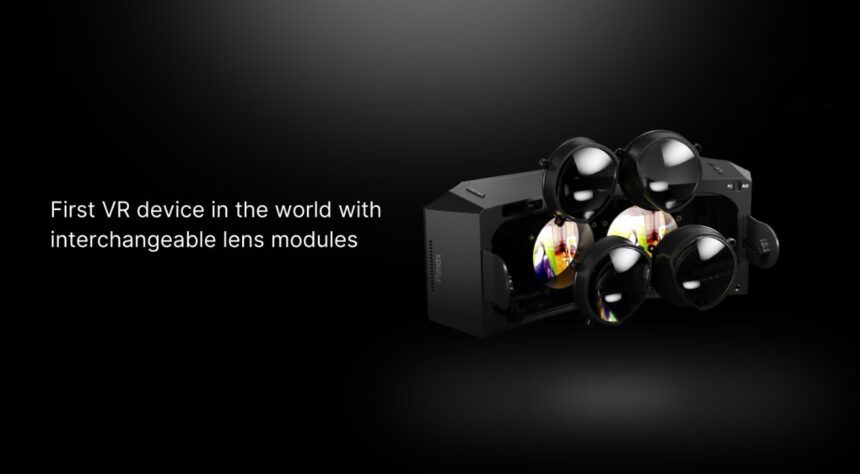Pimax Crystal QLED: New high-end VR headset with swappable lenses

Pimax introduces a standalone VR headset that can also be used with a PC. In terms of technology and price, it is aimed at enthusiasts.
The Pimax Crystal QLED is the first device in the Reality product line and offers a lot of high-end technology.
The QLED displays with MiniLED backlight have a resolution of 2,880 x 2,880 pixels and are thus on par with the PC VR headset Varjo Aero (review). The maximum refresh rate is 160 hertz.
A unique selling point of the Pimax Crystal is the swappable lenses. The device comes with two sets of lenses that allow the user to prefer either a wider field of view or image sharpness.

Bild: Pimax
The standard lenses offer the sharpest image and a horizontal field of view of 110 degrees. With the second pair of lenses, the user can trade a larger field of view (125 degrees horizontally) for a lower pixel density (35 instead of 42 PPD).
Pimax has once again reached deep into its marketing bag of tricks when it comes to the pixel density specifications, possibly taking the PPD value in the center of the image. In any case, it is difficult to understand how the company arrived at 42 PPD.
Pimax Crystal: self-powered and PC-VR ready
Pimax uses aspherical lenses and could thus deliver a particularly clear image, as with the Varjo Aero. The company also promises visual acuity adjustment for diopters from 0 to 7. The lenses have a layer of blue light filters to counteract eye fatigue. The device has Eye Tracking by Tobii built in, which automatically adjusts the lens distance (58-72 mm).
In standalone mode, the Pimax Crystal uses a Snapdragon XR 2 like the Quest 2 or the Vive Focus 3. There are several options for a PC-VR connection.
- PC VR streaming over own WLAN via Wi-Fi 6E and split rendering
- latency-free PC VR streaming via a separately available 6o-Ghz WiGig module
- connection to PC via Displayport cable for lossless data transfer
High-end technology with premium price
Pimax Crystal uses four integrated tracking cameras for room and controller tracking. Two Pimax Reality Controllers are included in the package, as well as a DP cable. If you use the Pimax Crystal on a PC and want the most accurate tracking possible, you can purchase a faceplate for SteamVR 2.0 tracking. The battery for standalone mode has a capacity of 6000 mAh.
Pimax plans to launch the Crystal headset in the third quarter of 2022. An app store for mobile VR apps is also planned to go online in the same period. The price for the Pimax Crystal is $1,899. Former Pimax customers receive a discount of $100.
At this price, the Pimax Crystal is a bit cheaper than the Varjo Aero ($2,000) and still offers features like standalone operation and wireless PC VR streaming. However, it remains to be seen how well the VR headset performs in practice.
In the fourth quarter, another device of the new Reality product line with a particularly wide field of view will be released: the Pimax 12K Reality QLED. It will cost $2,399.
Note: Links to online stores in articles can be so-called affiliate links. If you buy through this link, MIXED receives a commission from the provider. For you the price does not change.